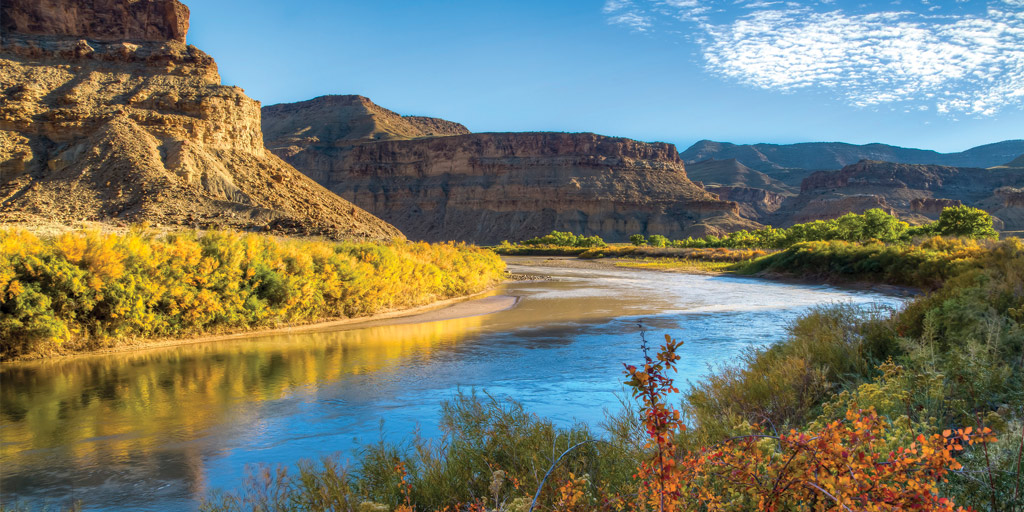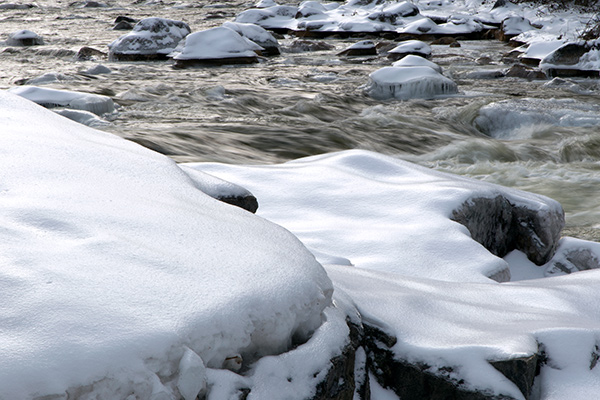
Dear Eartha, I can’t help but be a little worried about the snowpack and warm temperatures this winter. Is this a growing trend? What does this mean for our summer stream flows?
You’re not alone in your worries about the lack of snow and warmer temperatures this winter. While one year alone doesn’t indicate a growing trend, when we look at the last 40 years, we see statewide temperatures in all but one of those years hotter than the 20th-century average. This trend and its impacts, along with other observations of Colorado’s climate, were recently summarized in a report commissioned by the Northwest Colorado Council of Governments titled “Climate Change in the Headwaters: Water and Snow Impacts.” In the report, the authors document how known climate trends may affect the water and snow resources in the headwaters region of the Colorado River. In case you missed it – that’s us.
Summit County is home to the Blue River, a headwaters region for the mighty Colorado River. Located just west of the continental divide, the Blue River watershed plays a critical role in the health and vibrancy of this major river basin. Not only does the snowpack from Summit County help supply water to 33 million people in the Colorado River Basin to the west, it also plays a crucial role in trans mountain diversions, supplying water to communities on the eastern slope of Colorado. In addition, Colorado’s population alone has ballooned from 1 million people in 1930 to 5 million today. It is estimated that it could double again by 2050. According to the Colorado Water Plan, this leaves the state with a 500,000 acre-foot deficit of water (enough to supply 2.5 million people) under business as usual water demand. If our water and snow resources decrease, our ability to meet this water gap will be much more difficult.
The lack of snow we see this year has been manifesting across the west in recent years with less winter precipitation falling as snow and snowmelt that is occurring earlier in the season. Flows in the Colorado River have recently been the lowest they have been in the past century largely because of the evaporative effects of higher temperatures. This isn’t expected to change any time soon because the majority of river flows in the west are driven by snowpack. Under the Colorado River Compact, a lack of water could result in water restrictions for communities or curtailment of water use depending on your place in the water rights line.
All of this also has subsequent impacts on recreation and tourism. Statewide, recreation and tourism account for approximately $28 billion in consumer spending as well as 229,000 jobs – many of which are in headwaters regions, including Rocky Mountain National Park and the I-70 corridor. It is believed that hot temperatures, low water levels, and other climate manifestations will adversely affect our tourism industry. That means tourism communities must mitigate the problem or adapt by altering their services, programs, and events. This can come with a heavy price tag and a large amount of uncertainty.
So, what can you do to help mitigate these changes? The good news is that individuals can have an impact. As a member of a community, citizens can participate in the public process and demand policies that curb greenhouse gas emissions. GHGs are the leading cause of climate change and are driving the temperature changes and perception uncertainty. You can also support water efficiency and conservation measures that voluntarily use less water, keeping more in the stream both for environmental purposes, but also future demand. In fact, you could even weigh in on the draft water efficiency plans your local water utility has available for public comment. Breckenridge, Frisco, Dillon, and Copper Mountain Metro all have draft plans available to address future water demand. They can be found on the utility’s website or at highcountrconservation.org/water-conservation. Finally, you can address your fossil fuel and conventional energy demand. Consider alternative energy sources and ask your elected officials to leverage contracts with utilities to go to 100% renewable energy. Together, we can have a collective impact on climate change.


